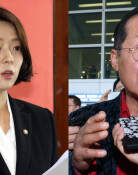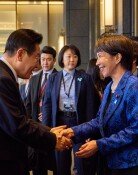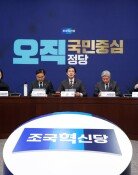Yoon’s relocation plan to Yongsan met with concern about consequences
Yoon’s relocation plan to Yongsan met with concern about consequences
Posted March. 21, 2022 07:55,
Updated March. 21, 2022 07:55
South Korean President-elect Yoon Suk-yeol officially declared that the presidential office will be relocated to the Defense Ministry compound in Yongsan, central Seoul, adding that the current Cheong Wa Dae site will change into a public park for citizens. Giving a briefing on the planned relocation to Yongsan to the press in person with a presentation pointer for almost 90 minutes, he said that it is a hard job to do but it all comes down to a better future for the country.
Even with no objection to Yoon’s determination to put an end to the closedness of Cheong Wa Dae, his decision causes some regrets. It is not about whether Yongsan is an appropriate candidate site but about whether it is a timely decision to make at a time when critical national issues are still left unaddressed. Regarding this, there are concerns and criticisms of his impatience and hastiness in pushing ahead with the relocation plan. While he made it clear to open a new era in the Gwanghwamun area, Yongsan rose as a new option amid public controversy. In response, he acted as if he took the bull by the horns by making his plan official.
President-elect Yoon explained in detail that it is inevitable to move to Yongsan, describing that a new office in Gwanghwamun will cause a disaster for the public. Although his rationale is partly understandable given presidential security, budget, public accessibility and other realistic aspects of the plan, there is still strong opposition. At a time when North Korea takes suspicious action around the time of power transition, the relocation of facilities of the Defense Ministry and the Joint Chiefs of Staff due to an incoming presidential office may cause gaps in the security system. Added to this, former members of the Joint Chiefs of Staff expressed concerns that national and military commands, if they are situated nearby, can be an easy target of an enemy’s simultaneous attacks. The command-and-control system, installed in an underground bunker at Cheong Wa Dae, will have to be rebuilt from scratch. There is also controversy over whether the estimated cost of around 50 billion won can cover the whole plan and whether it is appropriate to use reserve funds.
Yoon said, “Once I move in Cheong Wa Dae, I will find it hard to walk out of it.” In some sense, his argument sounds reasonable given that President Moon Jae-in failed to keep his presidential pledge to communicate with the public in the Gwanghwamun area due to presidential security issues. However, it still requires careful consideration because the relocation of the presidential office will also affect where his successors work. No one would oppose the argument that Cheong Wa Dae is a symbol of “imperial power” so it needs to change no matter what. Regrettably, steps to listen to public opinions were missed in the process. Yoon could have thought of phasing in a renovation project on partial areas of Cheong Wa Dae over one to two years other than the immediate relocation to Yongsan. He might have been obsessed with a dogma aimed at dismantling Cheong Wa Dae. It is worrisome given that his apparent hastiness causes some concerns.







